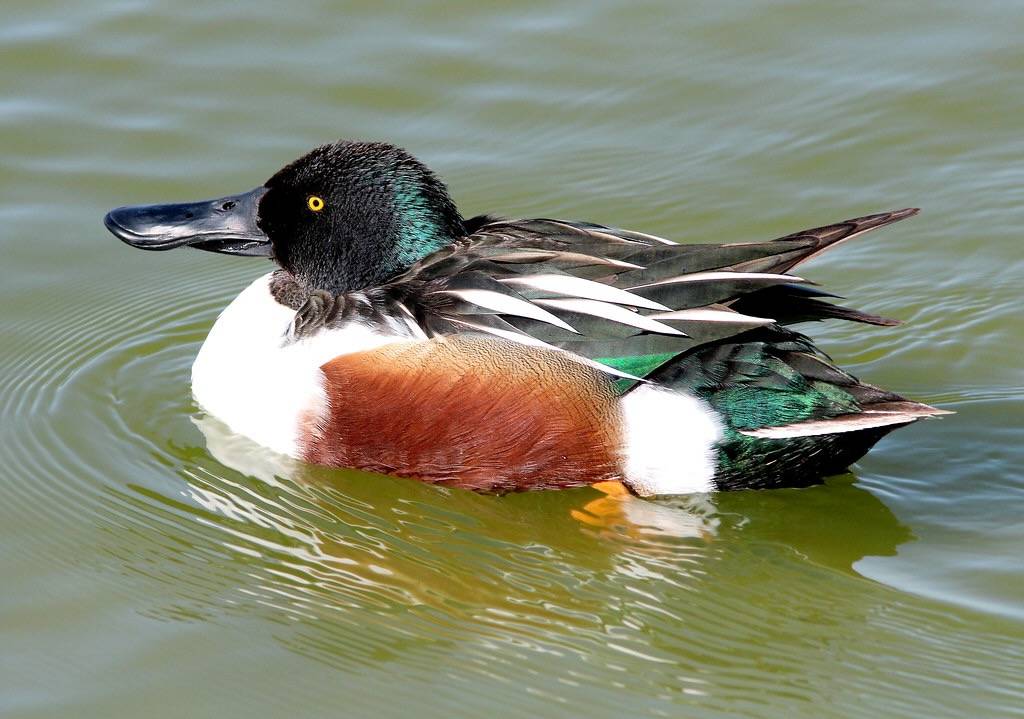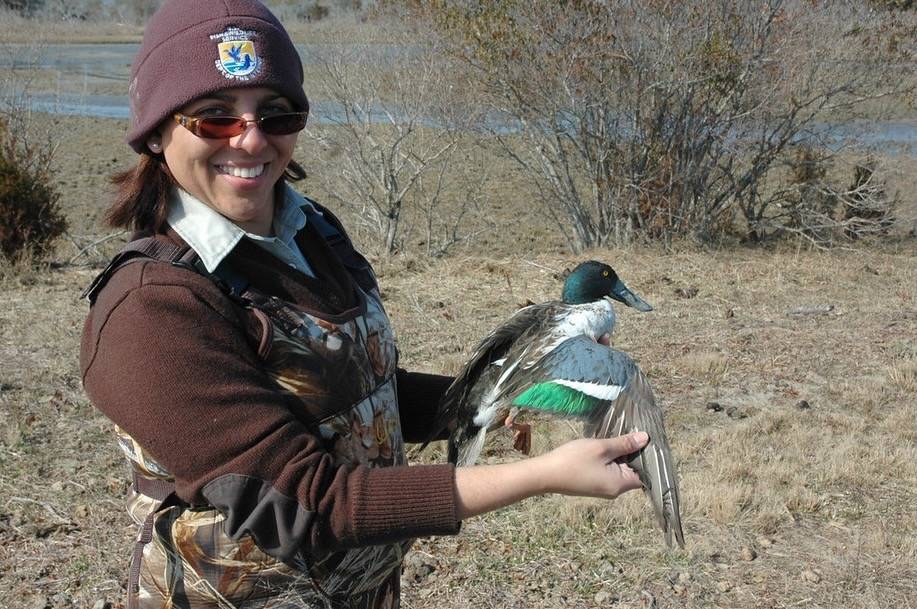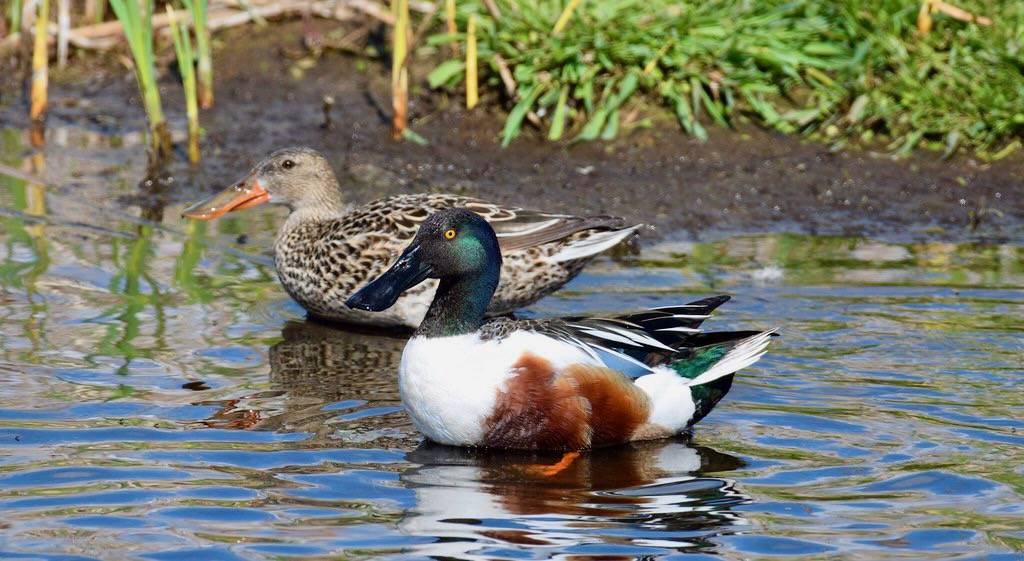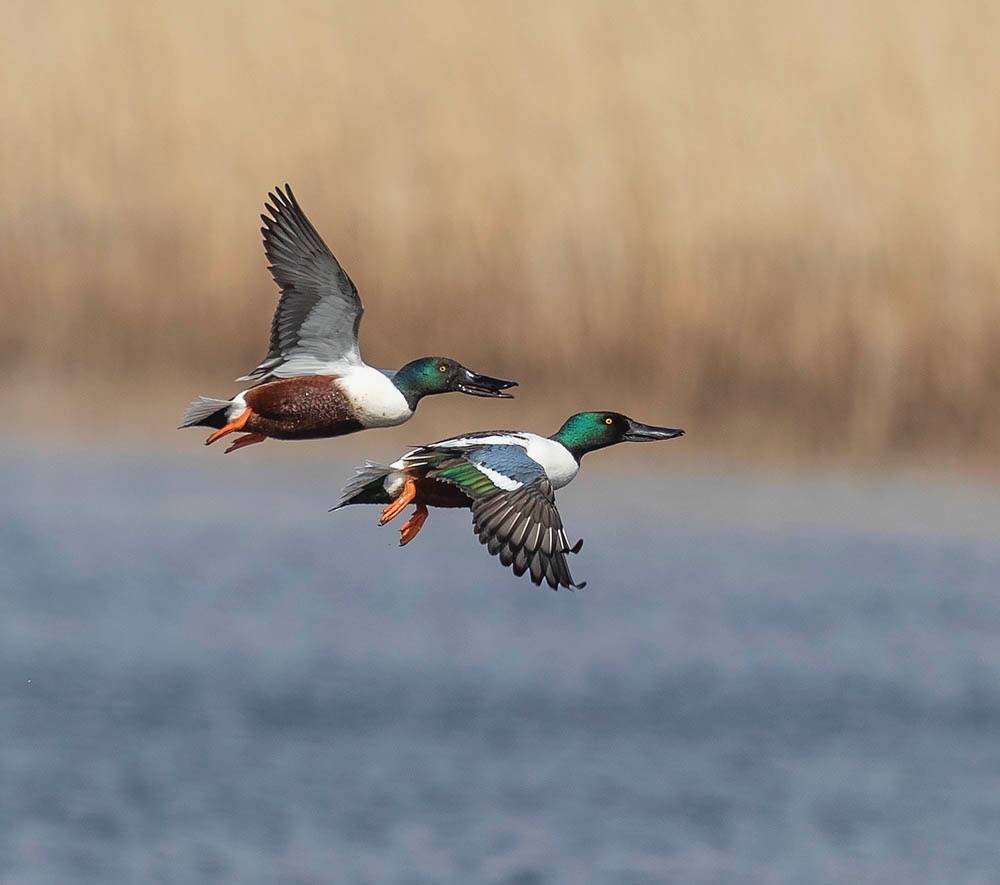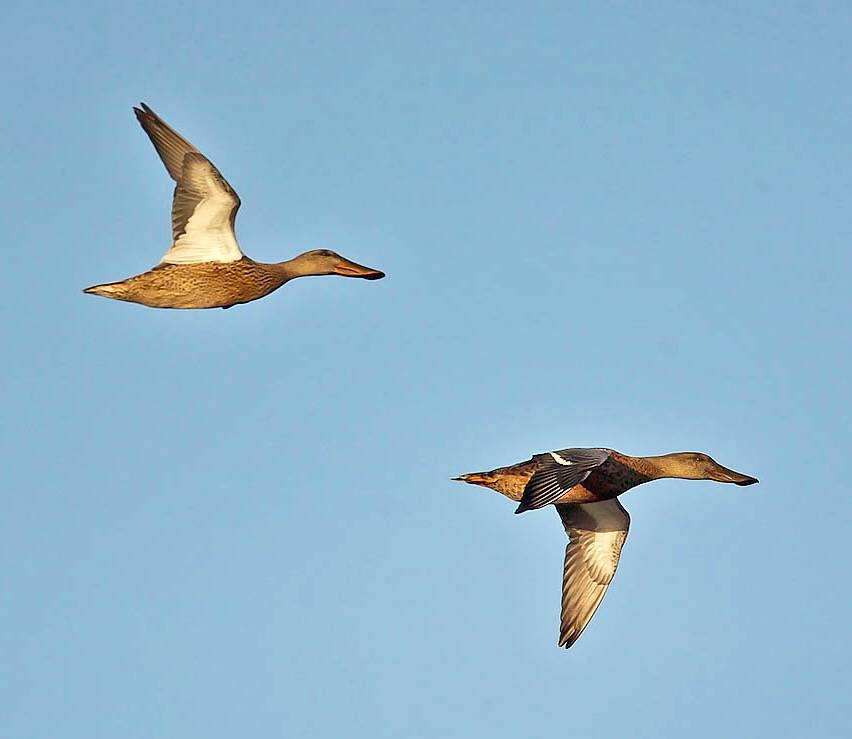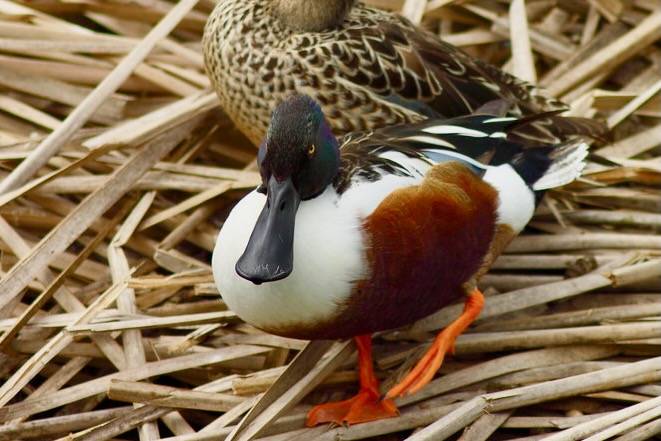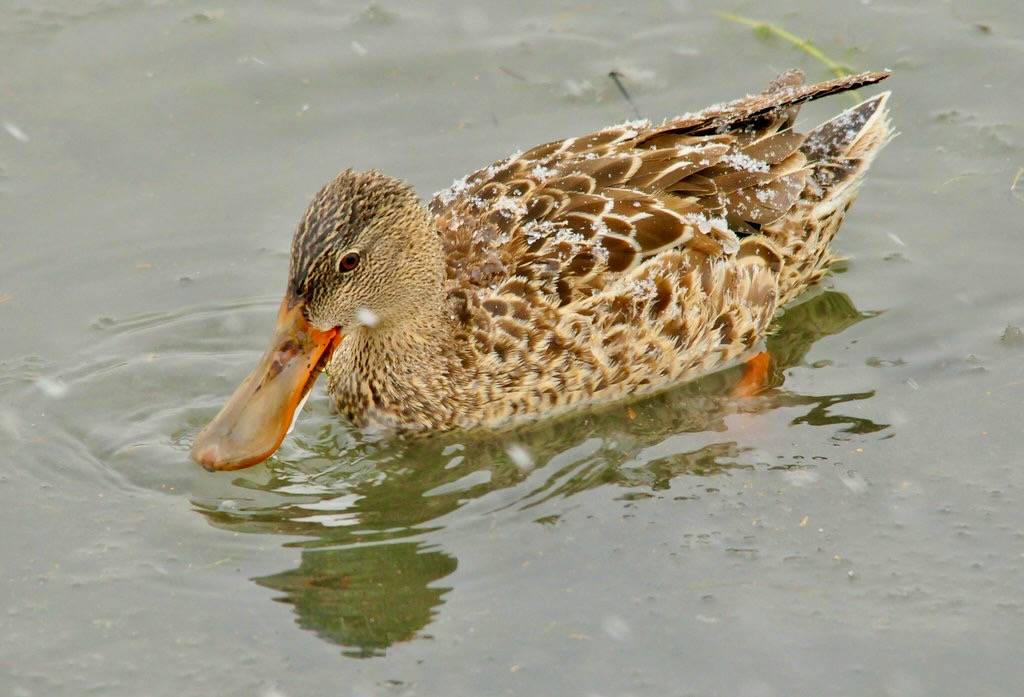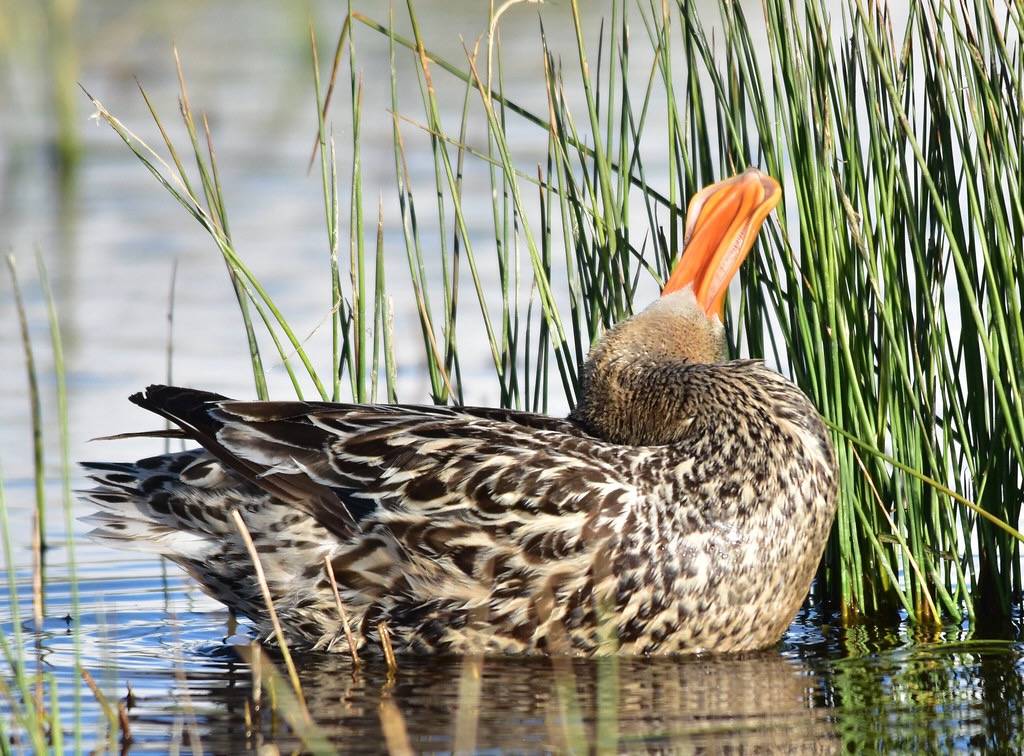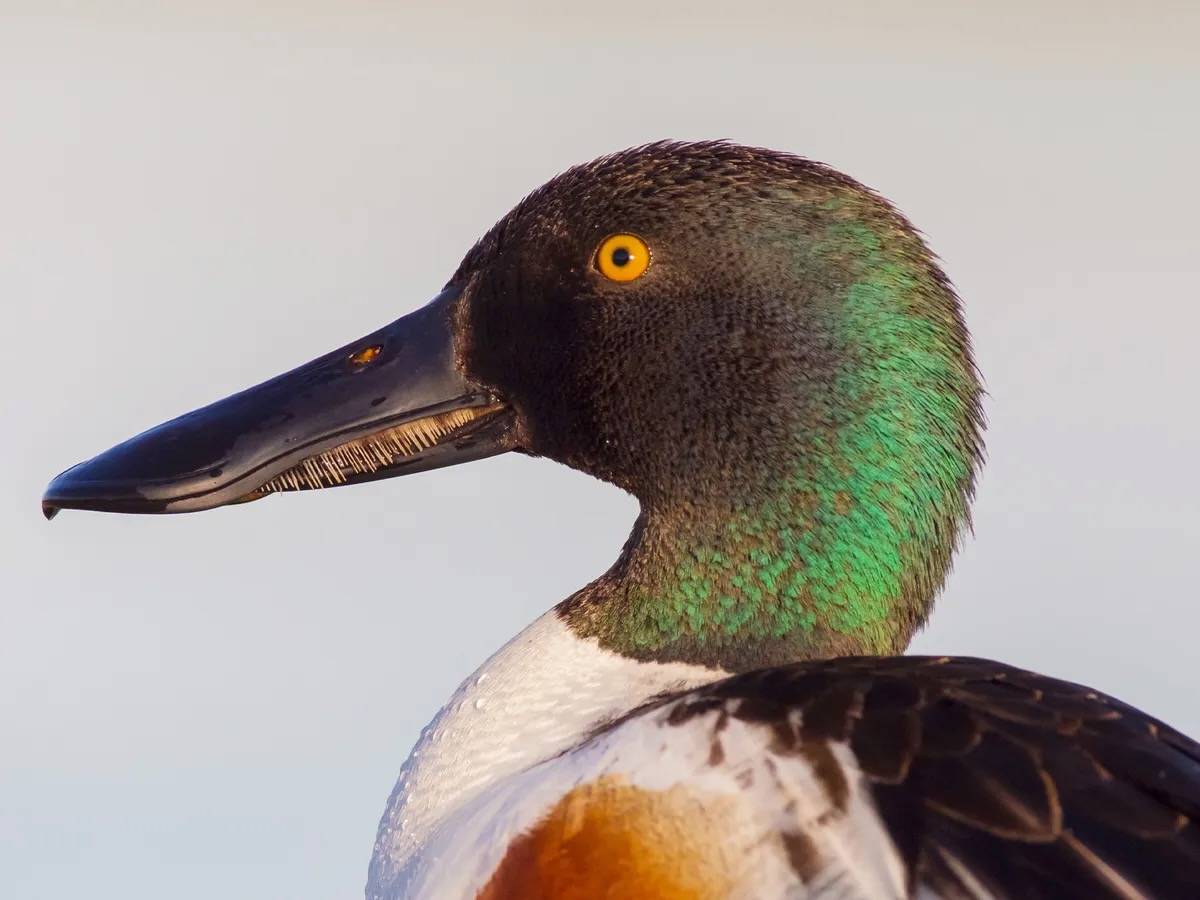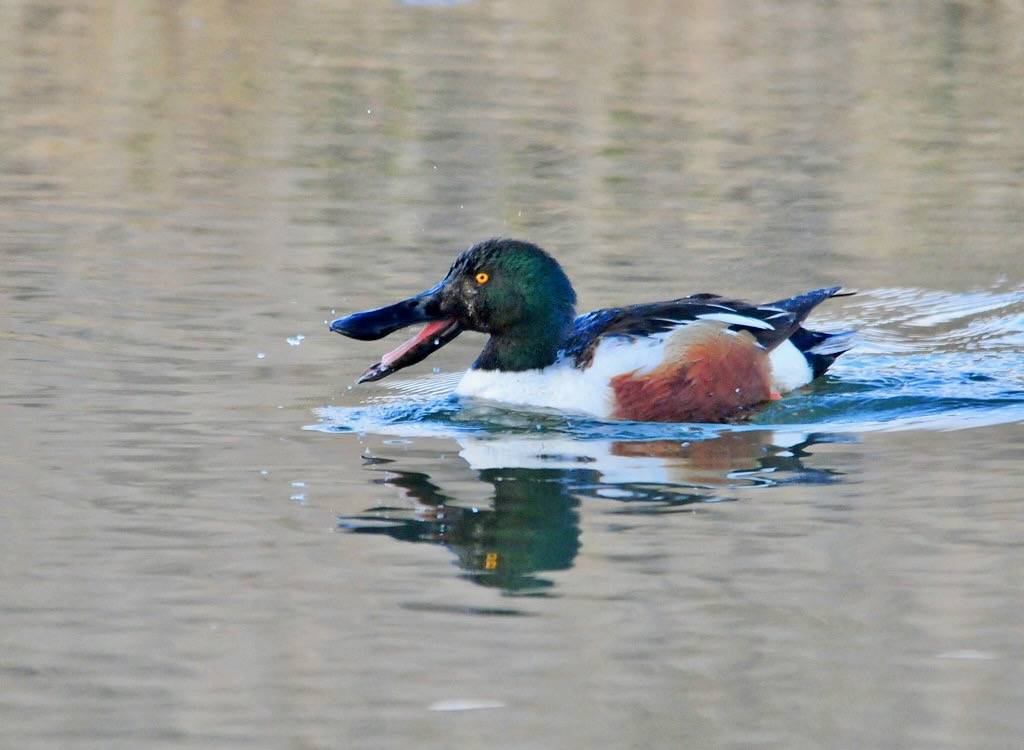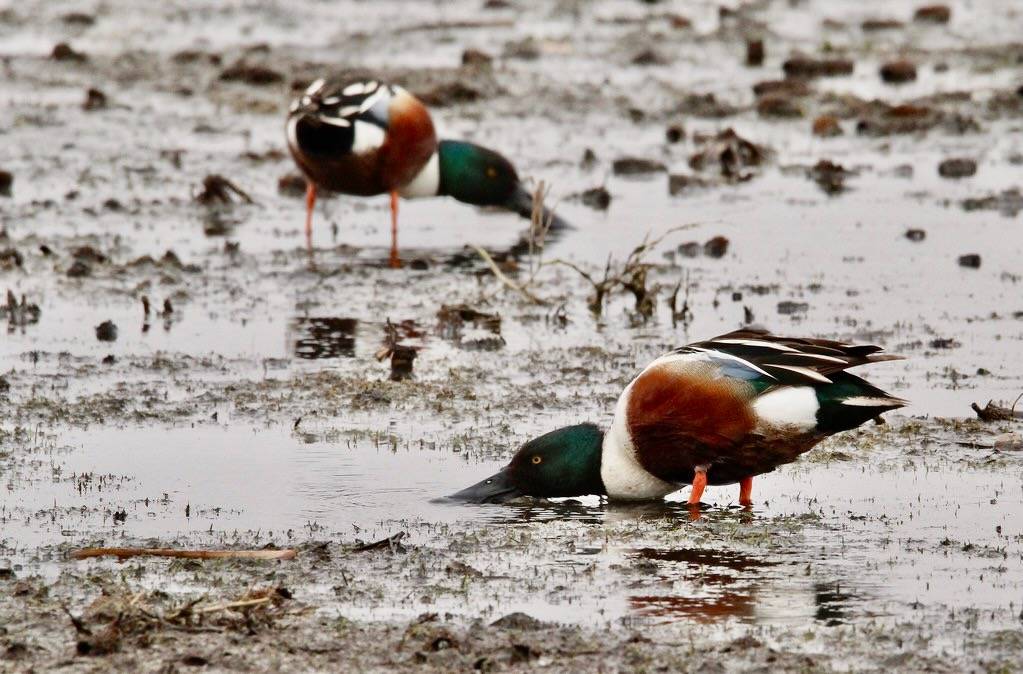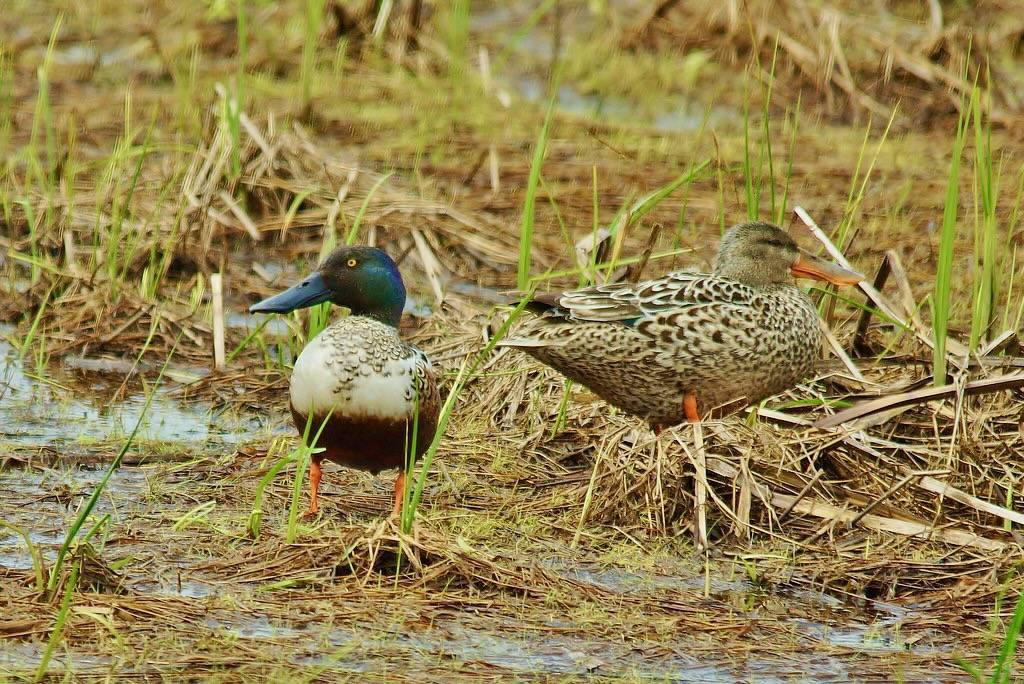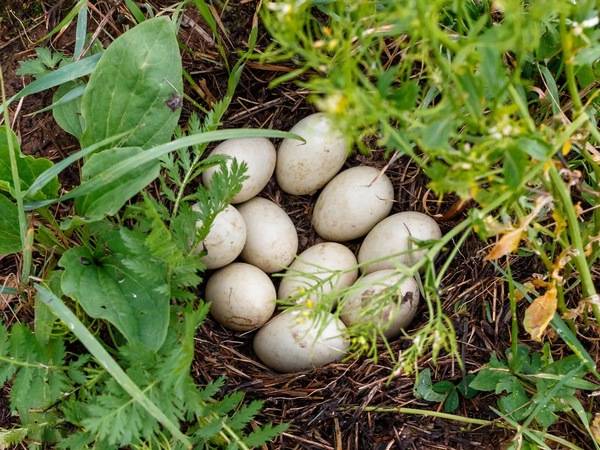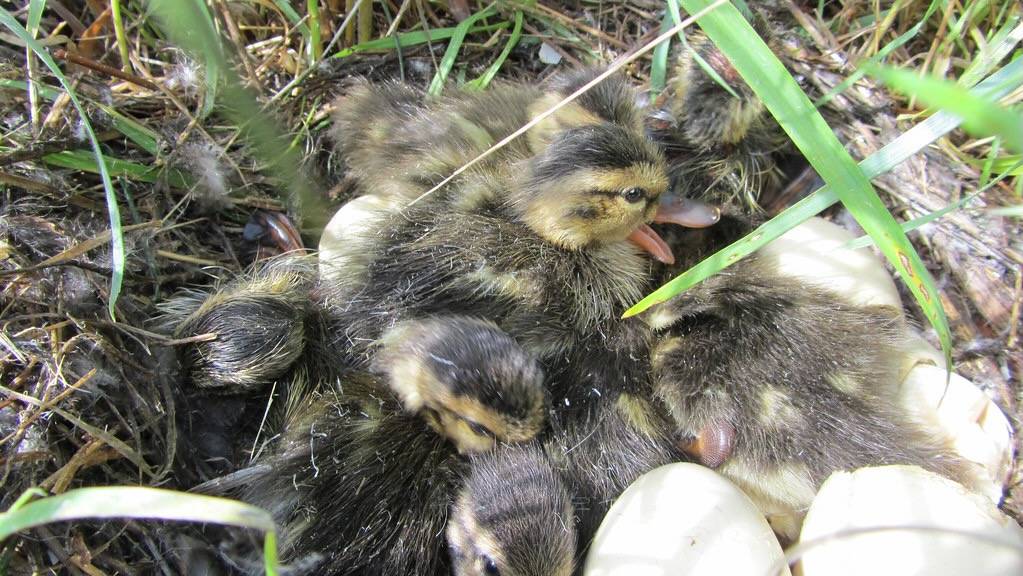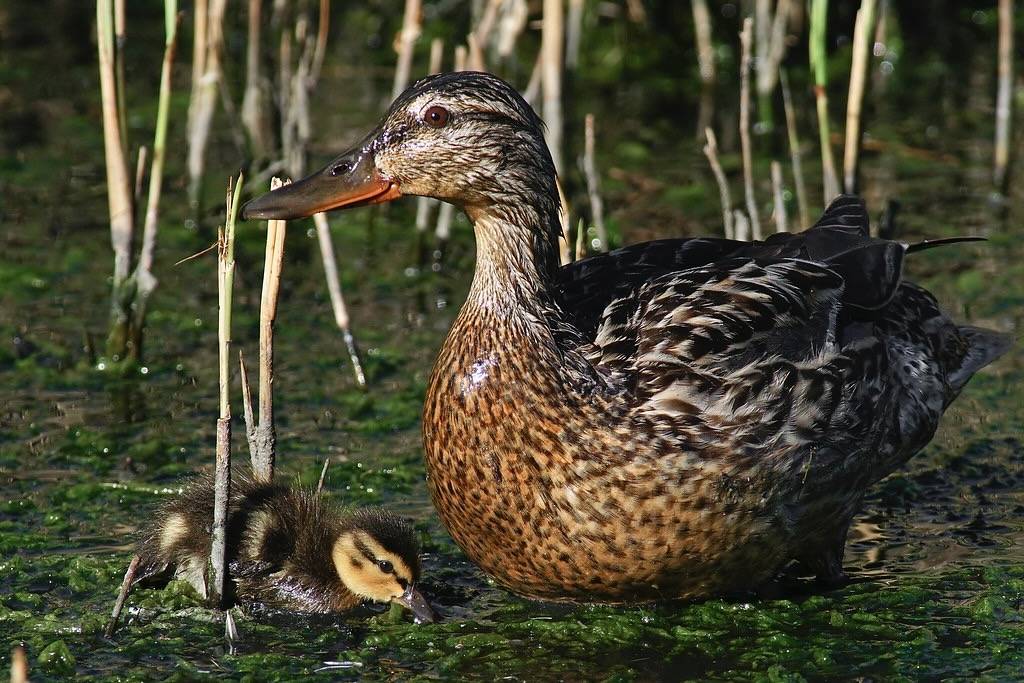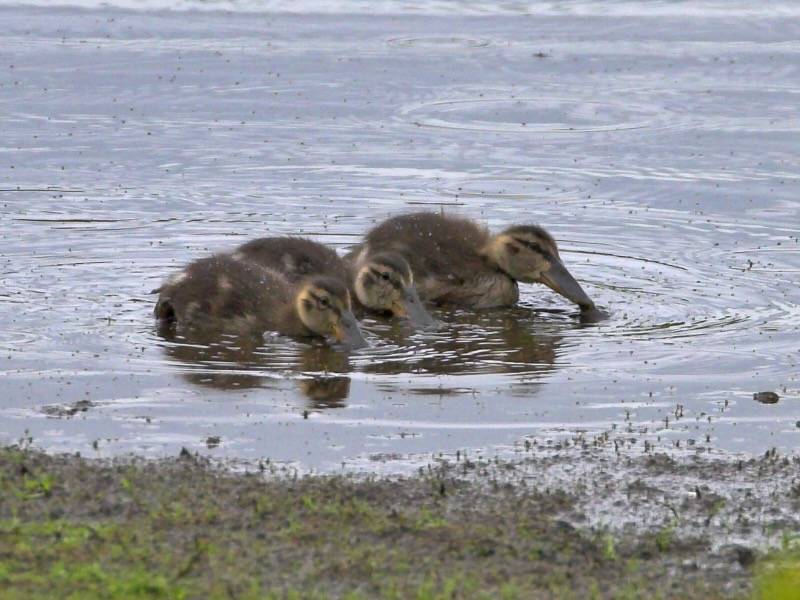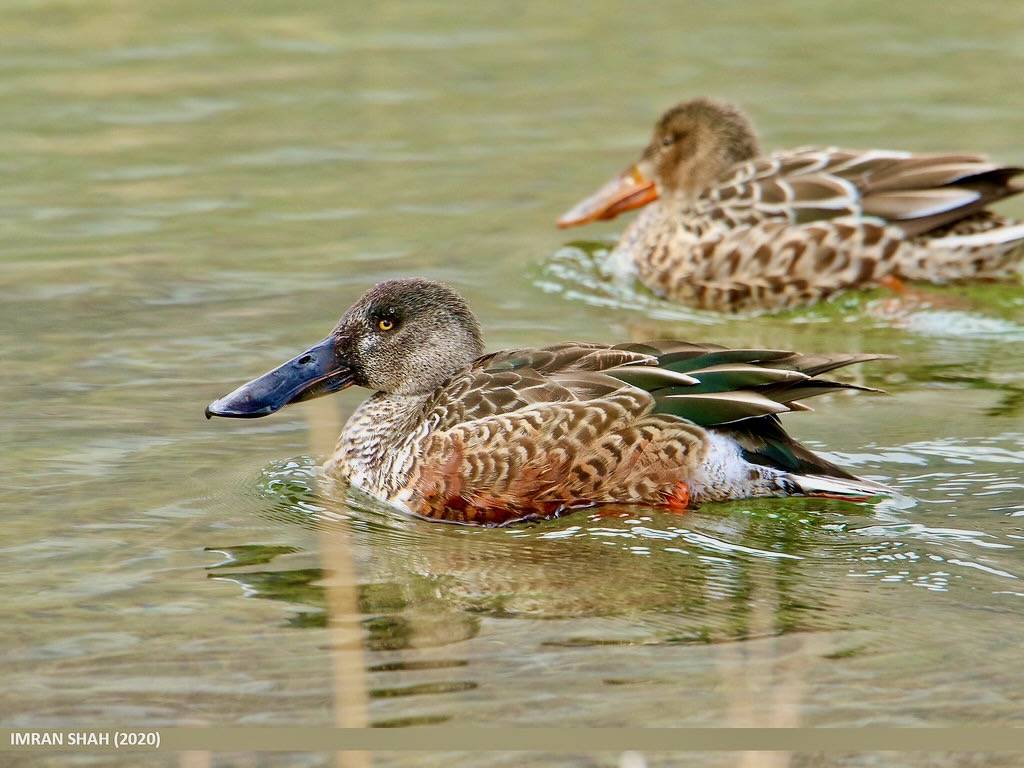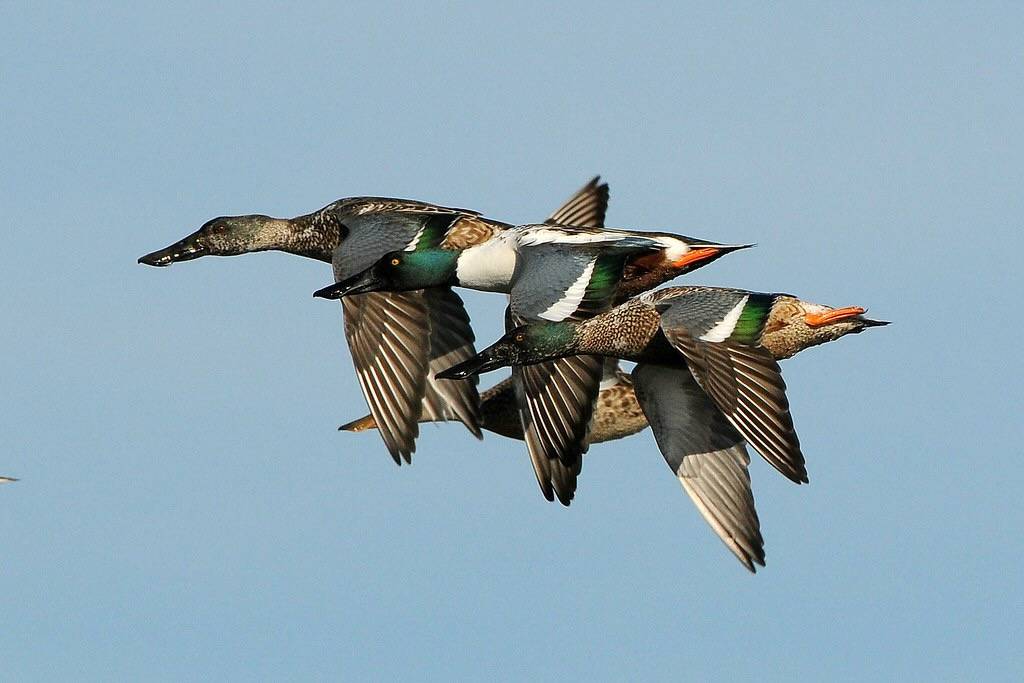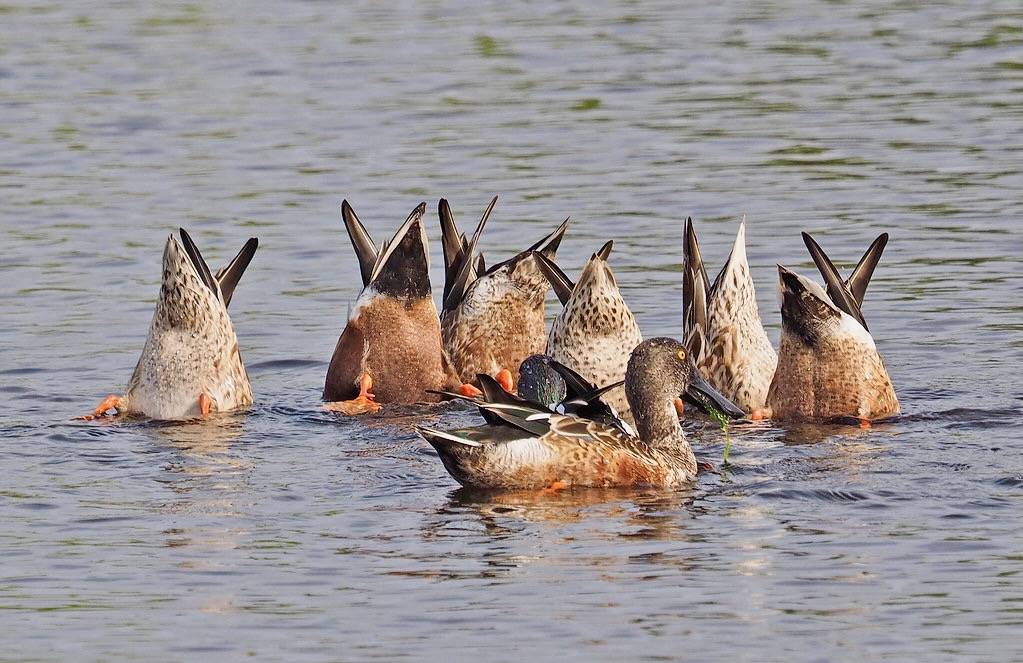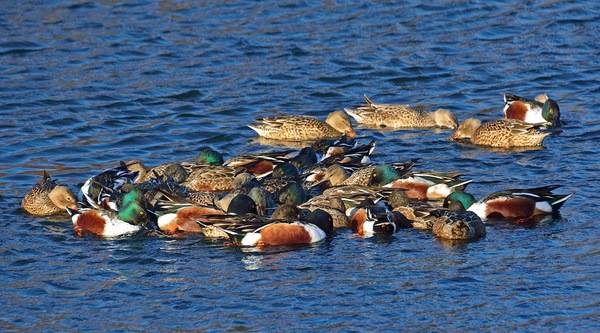Northern Shoveler
The Northern Shoveler has only been observed once at Salter Grove from 2002 through 2023. The pair that appeared in late March 2020 was bobbing along the shoreline of the breakwater near Marsh Island.
Seen from the causeway, they were thought to be Mallards at first until their unmistakably large spoon-shaped bill came into view. At a distance, the two dabbler species can be confusing. The males of both species have an iridescent green head with rufous and white areas on the body, and the females have similarly brown and speckled plumage.
The Northern Shoveler breeds in the northern wetlands of central North America, Europe, and Eurasia. Shallow marshes with a muddy bottom rich in invertebrates provide the ideal breeding habitat. Its spatulated bill is equipped with a comb-like row of lamellae that is adept in straining food items such as small crustaceans, plants, and seeds from water. It easily plows through thick mud that would be avoided by dabblers with shorter and narrower beaks.
Nests are placed on the ground of grassy areas away from open water. Males defend the nest from other males very aggressively, but abscond and leave all parental duties to the female as soon as she completes egg-laying and starts brooding. Fortunately, the precocial ducklings are able to move about and feed on their own shortly after hatching. The female only needs to lead them to food sources and provide protection from predators.
In the Western hemisphere, the Northern Shoveler winters south to northern Colombia and the Caribbean, inhabiting freshwater and brackish coastal marshes but generally avoiding saltwater marshes. European and Eurasian populations winter in southern Europe, the Indian subcontinent, southeastern Asia, and Japan. Vagrants documented as far south as Australia exemplify its strong migratory tendencies.

